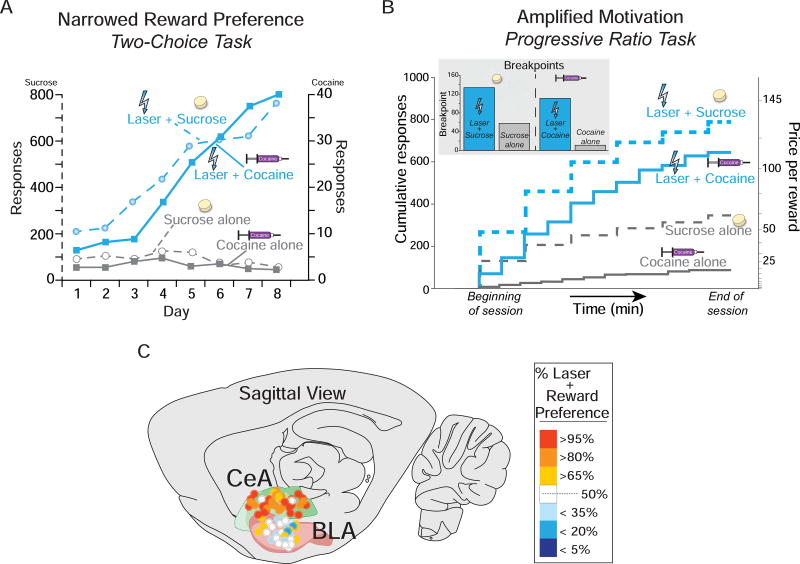Figure 3.
Central Amygdala optogenetic ChR2-pairing narrows and amplifies reward choice. (A) When given the choice between earning a sucrose reward alone (grey circles and dashed lines) or earning a sucrose reward paired with optogenetic central amygdala (CeA) ChR2 stimulation (blue circles and dashed lines), rats intensely prefer the CeA-paired sucrose reward above and beyond the sucrose reward alone. When given the choice between earning a cocaine reward alone (0.3mg/kg/infusion; grey squares and solid lines) or earning a cocaine reward paired with optogenetic CeA stimulation (blue squares and solid lines), rats prefer the CeA-paired cocaine above and beyond cocaine alone. (B) In a breakpoint test of motivation intensity, rats are willing to work harder in a progressive ratio task, reaching higher breakpoints when laser is paired with rewards. (C) Notably, narrowing of motivation produced by optogenetic laser stimulation was observed in the CeA, but not the basolateral amygdala (BLA). Figure modified from [38] and [40]. CeA, central amygdala; BLA, basolateral amygdala.

